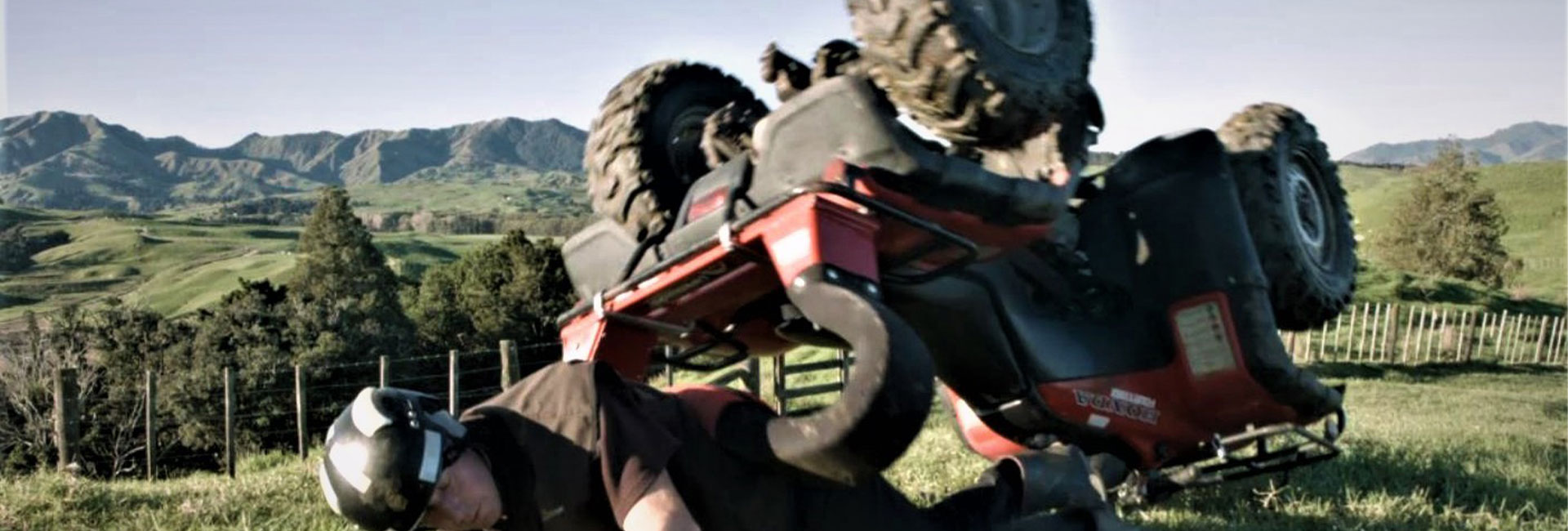Two week lead time on all windscreen orders.
Two week lead time on all windscreen orders.


The LifeGuard is unique in being possibly the only roll bar made that is flexible and has the ability to deform or deflect in shape if it comes in contact with a person’s body or limbs, yet it is not able to collapse altogether. This means it can hold the back of the quad up off the ground sufficiently to help prevent the rider from being crushed underneath. It has taken quad safety to a whole new level, and already proving itself. If the LifeGuard lands on or comes in contact with the rider it depresses at the point of contact, moulding around the object but increases in vertical strength with one side or both sides helping to take the weight off the person, while still supporting the quad. This is the main feature of the invention which could help save serious injury or death.
Another great feature of the LifeGuard, is if the quad rolls, and even if the LifeGuard doesn’t come in contact with the rider, it will provide space under the quad, also spreading the weight and making it quite possible to push the bike off you. The danger of a conventional roll bar fitted to a quad, is the possibility of the roll bar could strike the rider on the ground, inflicting injury or death. Most, if not all other roll bars are rigid, and although strong and can give crush protection, are rather unforgiving if they strike the rider.
The LifeGuard is made from an aluminium base with plastic segments forming the arc. The base ends are from an industrial grade alloy plate with base rails of tempered high tensile extruded alloy. A process called Interpon TC Industrial Powder Coating, is used on painting the base, and is oven cured giving a durable, attractive and weather resistant finish.
The segments that form the arc are injection moulded. Different types and grades of plastic were researched to find a material with the right qualities, which included:
The tensioning mechanism has been designed to be simple, strong and fail proof. All components are stainless steel and have been tested to meet strict engineering standards by Industrial Research Engineers in Wellington.
The cables which hold the segments together, are a 12-strand braided rope, made from DSM’s Dyneema® SK75 fibres. It has a low elongation of 3.7%, is extremely flexible, and has a breaking strain of 3500kg.
The outer cover zips on to protect the segments. It is 5mm thick and made from neoprene, with a wear resistant UV stable nylon fabric each side. The cover gives added protection and padding if coming in contact with the rider.
The mounting brackets includes a flat bar that can be swivelled at any angle, with hooks that rotate 360° to any position. These are made from stainless steel and are supplied with 304 stainless steel bolts.
The LifeGuard simply clamps to the rear carrier of your Quad, fitting most makes and models. Severe roll over testing has proved that this method is highly effective as the flexible character of the LifeGuard soaks up the impact, and the carrier can easily sustain the forces required.
The mounting brackets consist of two flat bars that can be swivelled at any angle, with hooks that rotate 360° to any position. They simply clamp over each end of the LifeGuard and once the hooks are positioned, tightened with a torque wrench to 10ft lbs. or 12 newton metres – this is important, as over-tightening could damage your carrier, and/or the hooks.
The LifeGuard fits most ATV models, but is not recommended for plastic carriers, and is still undergoing testing to find a suitable mounting option for these – i.e., most new Polaris Quads it may not work.
We pride ourselves on producing high quality gear that will keep you safe when you’re out working hard on your farm. But like all good things, to keep our gear working hard, it needs to be regularly checked and serviced to remain at optimal working condition. One good example is the LifeGuard, which has already saved a number of lives across New Zealand and Australia since its launch in 2013. Because the unique LifeGuard design allows it to flex around you if your ATV ever rolls, it is made of fabric-based materials which will naturally break down over time, both from general wear and tear and being out in the elements, especially New Zealand’s harsh sun.
There is little to go wrong with the LifeGuard and it should give many years of service. As with all equipment with moving parts, it is important that the LifeGuard is checked every 12 months for wear to the cords and moving parts.
Step-by-step installation
DownloadRegular checks & maintenance
Download*Only applies to LifeGuards, not QuadGuards
Learn MoreFind out about the concept development
Read moreLook after your gear and it'll look after you
Learn MoreAcknowledge the risks
Learn More